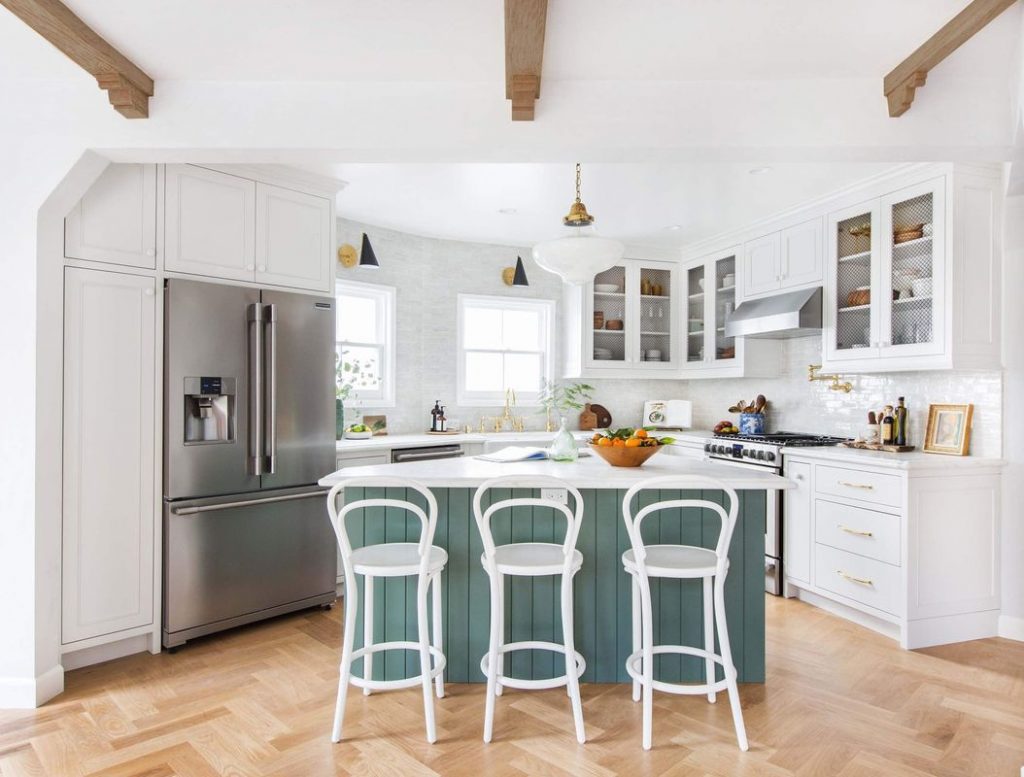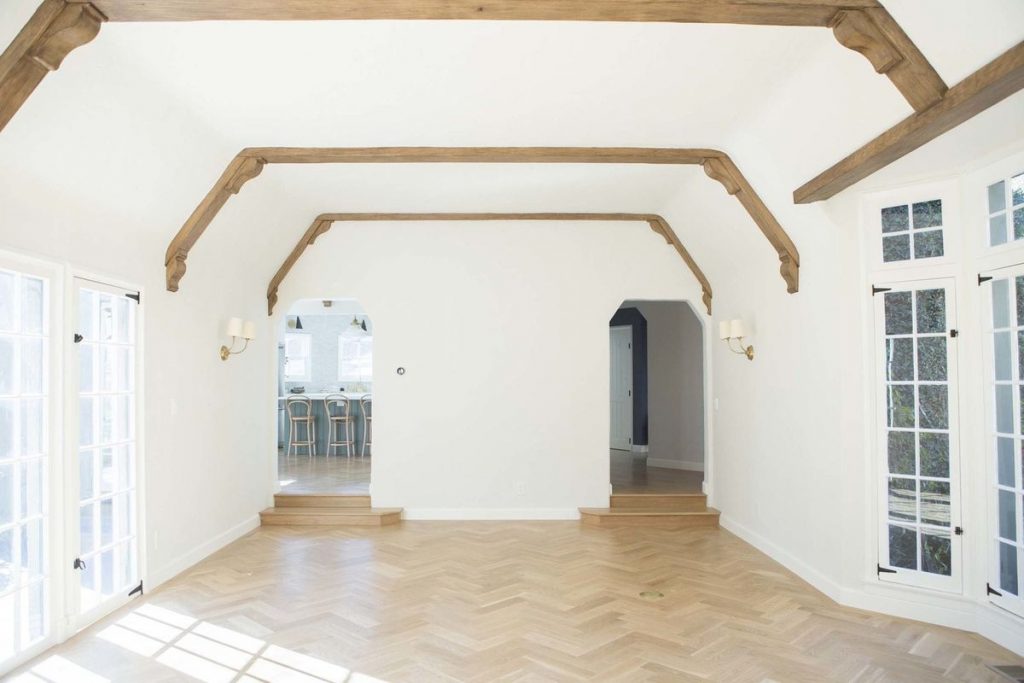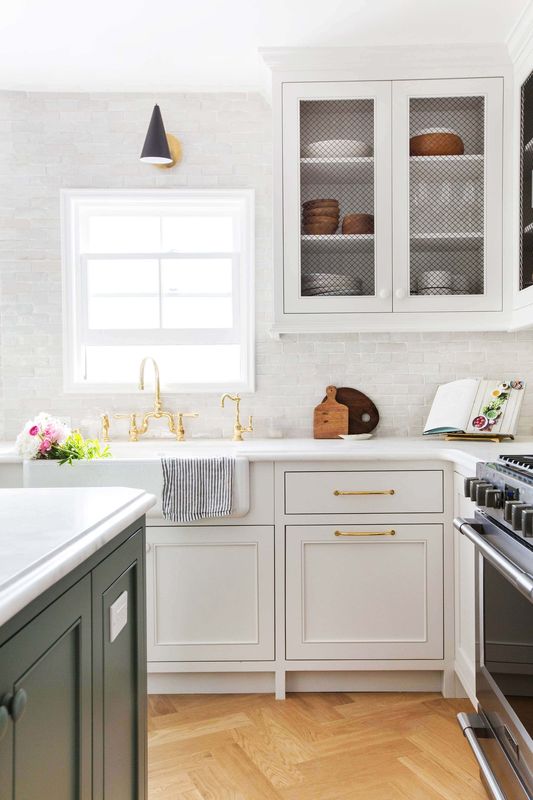How to Lay Herringbone Flooring

Herringbone in White Oak SKU: 15101937
Herringbone is quickly becoming the must-have flooring pattern of the year, but this is a flooring design that will never go out of style. The zigzag-style pattern that a herringbone layout creates is incredibly eye-catching, and when you use high-quality flooring, this design can easily make a room stand out. Due to the level of detail involved, this DIY flooring project can be challenging, but with the right materials and supplies, you can do it over a long weekend. Find out how to lay herringbone flooring in nine steps.
Pre-Installation Prep
1. Choose the Right Flooring Material
While herringbone flooring designs are somewhat flexible, you’ll want to make sure you choose the best possible type of flooring for this project. Prefinished engineered hardwood flooring is a smart choice, as it’s relatively easy to install and looks great with no additional stains or finishes required. Hardwood flooring is also a great pick, as it will give any room a high-quality sheen that stands the test of time. While you can also install some types of floor tiles, like bamboo vinyl flooring in a herringbone pattern, this DIY project will focus on engineered wood flooring.
When you order your engineered hardwood flooring, be sure to order a little more than you need. That way you’ll have a few extra slats in case of a mishap or a miscalculation.
2. Gather Your Tools and Supplies

You’ll need a long list of tools and supplies for this DIY project. Make sure you have the following on hand:
- Engineered hardwood flooring
- Border flooring strip
- Apron flooring strips
- Chalk line tool
- Circular saw
- Router
- Rubber mallet
- Wood glue
- Rafter squares
- Tape measure
- Spare piece of 3/4-inch plywood
- Screws
- Flooring nailer
- Flooring splines
- Flooring nails
- Painter’s tape
3. Prepare the Subfloor
Before you start laying out the herringbone pattern or installing the flooring, take some time to prepare the area. Make sure the subfloor is in good condition and that it’s completely level. If you don’t check before you get started, you might find that an uneven floor can require you to start over from the beginning.
Installing Herringbone Pattern

Herringbone in White Oak SKU: 15101937
1. Find the Center and Establish the Field
When you’re ready to start working on the design, use the tape measure to find the center of the room. Next, use the chalk line to create a line that extends down the center of the room, from one wall to the other. Since the herringbone design won’t cover every inch of the floor space, you’ll also need to layout the rectangular field that the design will occupy. Use the tape measure and chalk line to establish the border.
2. Cut the Flooring Slats
To find out the optimal slat length for your design, layout part of the design and use rafter squares to keep the slats at 90-degree angles. You’ll find that the slats must be trimmed to a multiple of their width to work with a given design. Once you’ve settled on that multiple, use the circular saw to trim the slats to the exact same length. Remember to trim the tongue side of each slat.
Next, add grooves to each slat so they’ll fit together correctly. Set your router based on the groove of an existing slat. Double check that the slats will fit together, and then rout the end of each slat you trimmed.
3. Create and Set a Nailing Blank
To create the nailing blank, which will be your template as you install the flooring, turn a piece of 3/4-inch plywood into a right triangle. The lengths of the two sides should exactly match the length of your flooring slats. Draw a centerline down the middle of the nailing blank, and then position it on the centerline you made on the floor with the long side along the top border. Screw it into the subfloor, and use the router to create grooves along the two identical edges.
4. Secure the Flooring
Put the first slat in place so it lines up perfectly against the nailing blank. Place the second so it overlaps the end of the first slat while lined up against the nailing blank. Make sure the tongues face out. Use the flooring nailer to place nails every few inches along the first slat. Use a mallet to hit the flooring nailer, and ensure the slat is secure. Do the same for the second slat.
Add subsequent slats to create the herringbone pattern, taking care to position two slats at a time. Do this until the pattern reaches the other border.
Remove the nailing blank, and turn it around so the flat side now faces the border opposite where it started. Place it so it fits neatly into the tongue of the slat you last installed. Screw the nailing blank into the subfloor again.
Place a new slat so it lines up neatly against the nailing blank and overlaps with the slat you just laid. Continue the pattern until you reach the opposite border, and keep up this cycle of installing slats and reversing direction until you’ve filled the area inside the border.
5. Fill in Empty Spots and Trim Extra Material
The nailing blank will leave a few empty triangle areas, so you’ll want to go back and fill them in. Use wood glue to add a flooring spline into each groove, effectively turning it into a tongue. Then nail extra slats into place, following the herringbone pattern, until you’ve filled in the empty space.
Next, you’ll want to trim the extra material that overlaps the border. Use a strip of painter’s tape to mark where you’ll cut, and use a circular saw to make the borders nice and neat.
6. Add Borders
Finally, it’s time to add borders around the herringbone flooring. Use the router to create grooves around all four sides of the flooring, and then use wood glue to attach flooring splines inside each groove. Use the flooring nailer to place the decorative border strip around the herringbone pattern. Then use the nailer to install the apron strips around the border. When you’ve filled the space and reached the surrounding walls, the flooring installation is complete.

Glacier Grey SKU: 15270744
Once you’re finished, step back and admire your work. Not only do you have an amazing new floor, but you also have an awesome new design feature that’s sure to inspire at least a couple of decor upgrades. while this tutorial focused on hardwood flooring, you can lay other types of flooring tiles in the herringbone style, including ceramic tiles and many different types of vinyl flooring.

